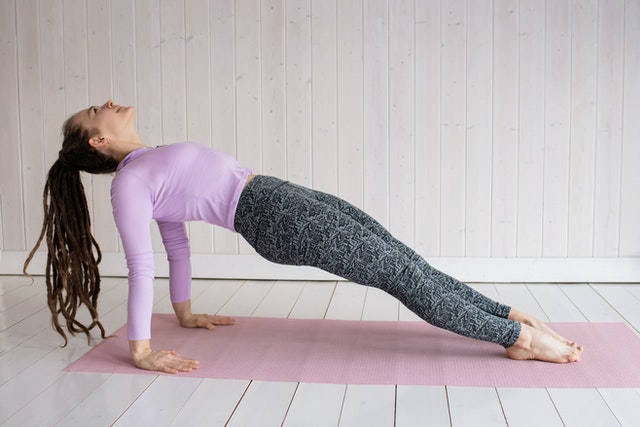Designing a bodyweight training program is not as difficult as most people think. You just need to keep a few points in mind before you get started, and that’s half the battle won.
What’s your goal?
The most important point to remember when creating a plan is to know what your end goal is. If you’re trying to lose weight, incorporating more explosive exercises like burpees, tuck jumps, etc. in your routine will help to get your heart pumping and boost your metabolic rate. You’ll also want to choose exercises that you can do in rapid succession.
If you’re a woman hoping to tone her midsection, thighs, and buttocks, most of your training should be comprised of exercises such as lunges, squats, box jumps, planks, etc. These exercises will tone your lower body.
Training your core
Core exercises are a staple of bodyweight training. Since you’ll be training 5 to 6 days a week, dedicating 6 to 8 minutes of your daily workout for your core will help to tone and strengthen it.
The midsection is of paramount importance and after training for a couple of weeks, you’ll realize that it recovers fast and can handle the daily load. A strong core makes your entire body and movements stronger and easier.
Maintaining balance
Men often make the mistake of focusing too much on their upper body. If you watch the calisthenics videos on YouTube, you’ll notice that the majority of videos are about movements that involve the muscles in the upper body.
Muscle-ups, levers, the human flag, etc. are all upper-body exercises. However, it’s important to train your legs too.
Include leg exercises such as squats, lunges, pistol squats, side lunges, etc. to tone and strengthen your legs. Your leg muscles are big muscle groups. Working them will help to boost your metabolic rate, increase muscle mass, and also burn more calories and fat.
Plyometric training
Plyometric training is a form of training where there’s a lot of jumping done in short intervals. The goal is to increase speed and explosive strength.
This is a very powerful training method and especially important as we get older. Many adults in their later years find it difficult to jump and do some of the movements they used to do with ease when they were younger.
Very often, it’s because they’re less active now and have stopped jumping around as they used to when they were kids. The body has a tendency to slowly lose what it doesn’t use, including the ability to jump effectively.
Dedicating one day of the week to plyometric training and engaging in exercises such as lunge jumps, box jumps, straddle jumps, power skipping, etc. will help you regain the explosive power and mobility that you may have lost.
It’s also an excellent cardio workout.
Variety and splits
It is important to have a variety of exercises and splits in your training routine to target the different muscles.
For example, on Mondays and Wednesdays, you may target your chest, shoulders, and triceps. Tuesdays and Saturdays could be for your back and biceps. Thursday could be plyometric training. Fridays could be for legs.
This is just a rough guide. While you should have leg and core exercises daily to keep the workouts balanced, on Fridays you’ll focus most of the training on the legs.
Most bodyweight training workouts you do will be full-body workouts but you need to know which muscles you are specifically targeting on that day and spend more time on them.
Variety comes about when you use different exercises to target the same muscles. If you’re training your chest, on one day you may use wide arm push-ups. The next time you may use dips or frog push-ups or decline push-ups.
This is an example of using a variety of exercises to target the same muscle group. Not only will it keep your body guessing, but you’ll be recruiting different muscles with each exercise while still hitting the pecs.
Remember these pointers when structuring a bodyweight training plan for yourself. Do your research and learn how each movement/exercise benefits your body and plan your routines accordingly.

